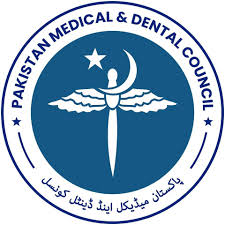Rate and Frequency of Indications for Caesarean Section (CS) in A Tertiary Care Hospital
Keywords:
pregnancy, caesarean section, indications of CS, delivery, tertiary care hospital.Abstract
Objective: To determine the rate of caesarean sections (CS) and frequency of their various indications. Study Design: Cross-sectional study. Setting: Department of Obstetrics and Gynaecology, Units 1 and 2, Arif Memorial Teaching Hospital (AMTH), Lahore. Duration: One year, from 1st January 2014 to 31st December 2014. Methods: All deliveries at gestational age 28 weeks and greater in the hospital during 2014 were included. Data were taken from labour room and theatre registers. Patients’ hospital number, booking status, parity, date of delivery, type of delivery and indications of emergency and elective caesarean sections were recorded. Results: All deliveries at gestational age 28 weeks and greater in the hospital during 2014 were included. Out of 1100, Multigravidae were 55.1% (606), whereas primigravidae were 44.9% (494). 62.4% (686) were caesareans (CS) and 37.6% (414) were vaginal deliveries. 94.92% (393) were spontaneous vaginal deliveries, 2.41% (10) vaginal births after caesarean (VBACs), 1.93% (8) were assisted breech deliveries (ABDs), 0.48% (2) vacuum deliveries and 0.24% (1) outlet forceps delivery. Out of 686 CS, 62.24% (427) were emergency CS (Em CS) and 37.76% (259) were elective CS (El CS). Conclusion: Currently AMTH has a high CS rate of 62.4%. If quality of vaginal deliveries is improved and CS in primigravidae is avoided as far as possible ,the number of ElCS can be eventually decreased. Health policy makers and managers should collaborate in designing strategies to improve expertise of dais and general practitioners and improve awareness in population to curtail the number of high risk cases with multiple indications referred for EmCS.
Downloads
Published
How to Cite
Issue
Section
License
The Journal of Fatima Jinnah Medical University follows the Attribution Creative Commons-Non commercial (CC BY-NC) license which allows the users to copy and redistribute the material in any medium or format, remix, transform and build upon the material. The users must give credit to the source and indicate, provide a link to the license, and indicate if changes were made. However, the CC By-NC license restricts the use of material for commercial purposes. For further details about the license please check the Creative Commons website. The editorial board of JFJMU strives hard for the authenticity and accuracy of the material published in the journal. However, findings and statements are views of the authors and do not necessarily represent views of the Editorial Board.

















